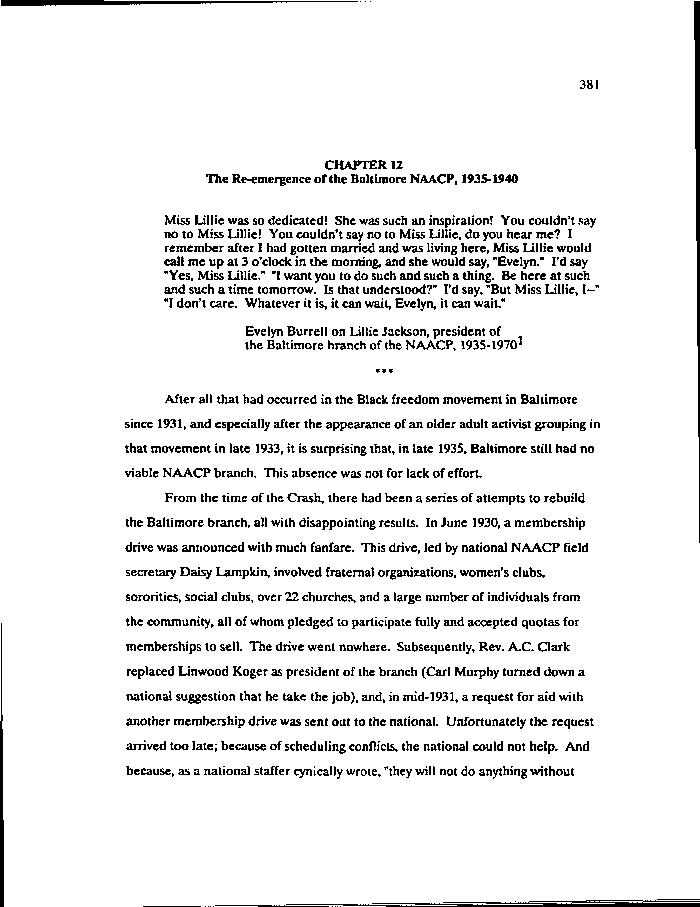|
381
CHAPTER 12
The Re-emergence of the Baltimore NAACP, 1935-1940
Miss Lillie was so dedicated! She was such an inspiration! You couldn't say
no to Miss Lillie! You couldn't say no to Miss Lillie, do you hear me? I
remember after I had gotten married and was living here, Miss Lillie would
call me up at 3 o'clock in the morning, and she would say, "Evelyn." I'd say
"Yes, Miss Lillie." "I want you to do such and such a thing. Be here at such
and such a time tomorrow. Is that understood?" I'd say, "But Miss Lillie, Ió"
"I don't care. Whatever it is, it can wait, Evelyn, it can wait."
Evelyn Burrell on Lillie Jackson, president of
the Baltimore branch of the NAACP, 1935-19701
After all that had occurred in the Black freedom movement in Baltimore
since 1931, and especially after the appearance of an older adult activist grouping in
that movement in late 1933, it is surprising that, in late 1935, Baltimore still had no
viable NAACP branch. This absence was not for lack of effort.
From the time of the Crash, there had been a series of attempts to rebuild
the Baltimore branch, all with disappointing results. In June 1930, a membership
drive was announced with much fanfare. This drive, led by national NAACP field
secretary Daisy Lampkin, involved fraternal organizations, women's clubs,
sororities, social clubs, over 22 churches, and a large number of individuals from
the community, all of whom pledged to participate fully and accepted quotas for
memberships to sell. The drive went nowhere. Subsequently, Rev. A.C. Clark
replaced Linwood Roger as president of the branch (Carl Murphy turned down a
national suggestion that he take the job), and, in mid-1931, a request for aid with
another membership drive was sent out to the national. Unfortunately the request
arrived too late; because of scheduling conflicts, the national could not help. And
because, as a national staffer cynically wrote, "they will not do anything without
|

